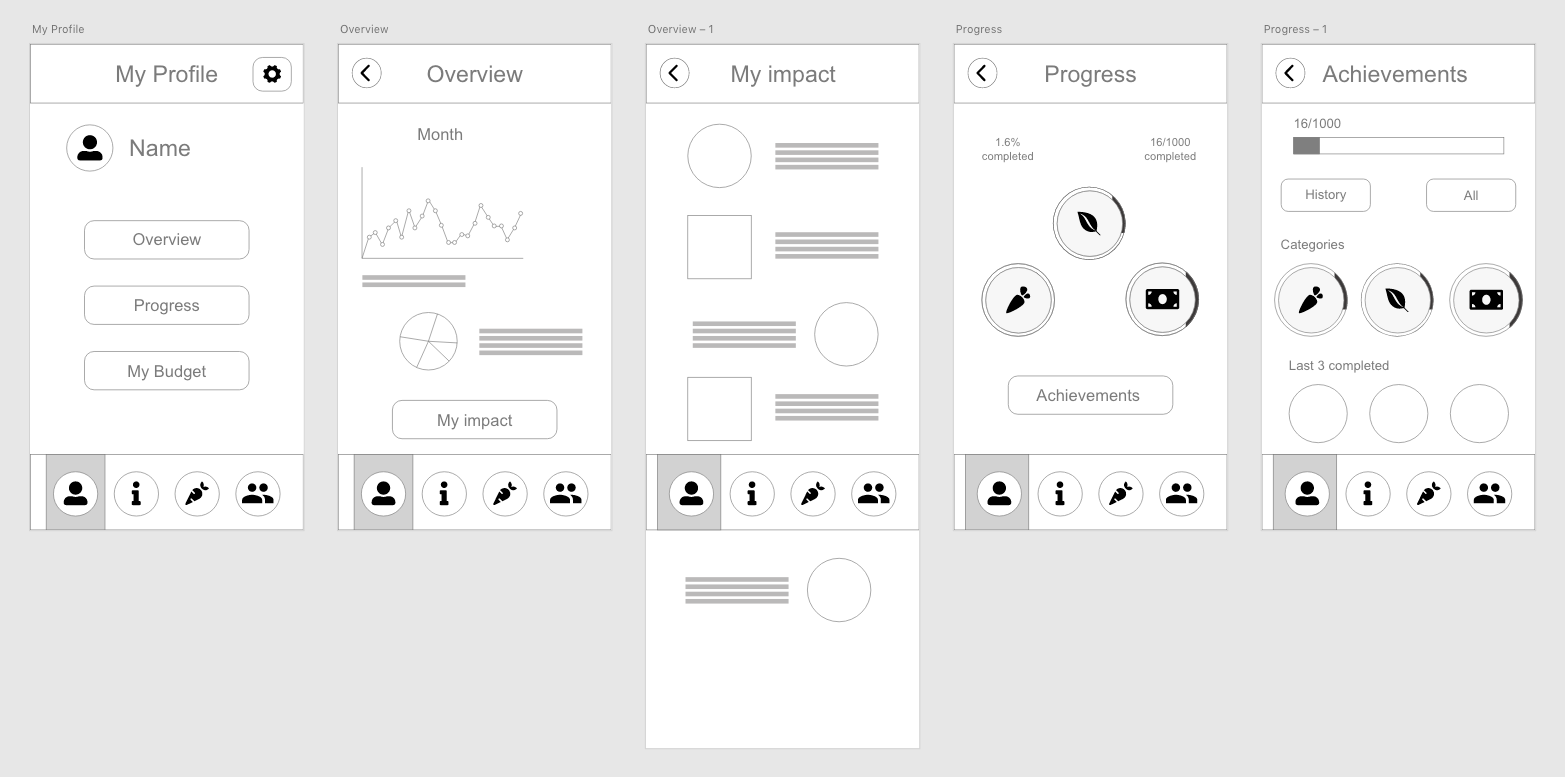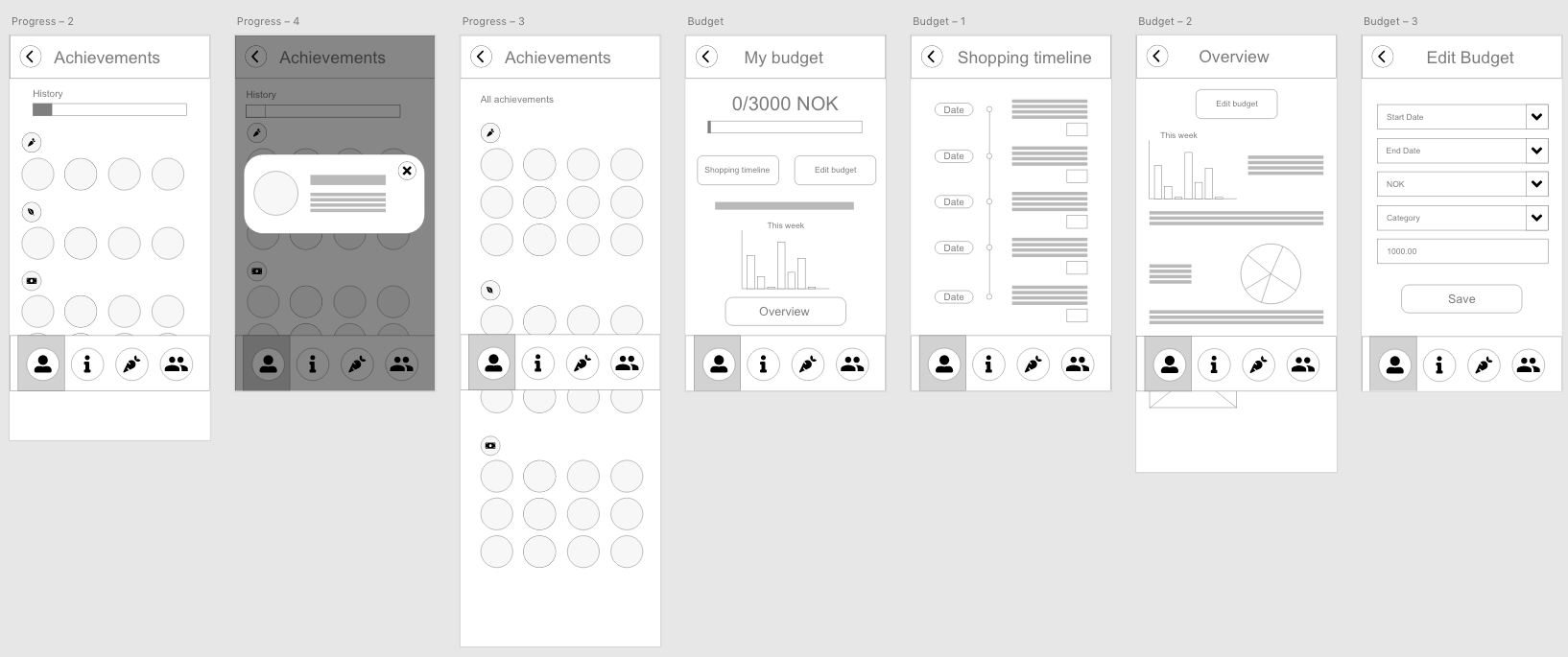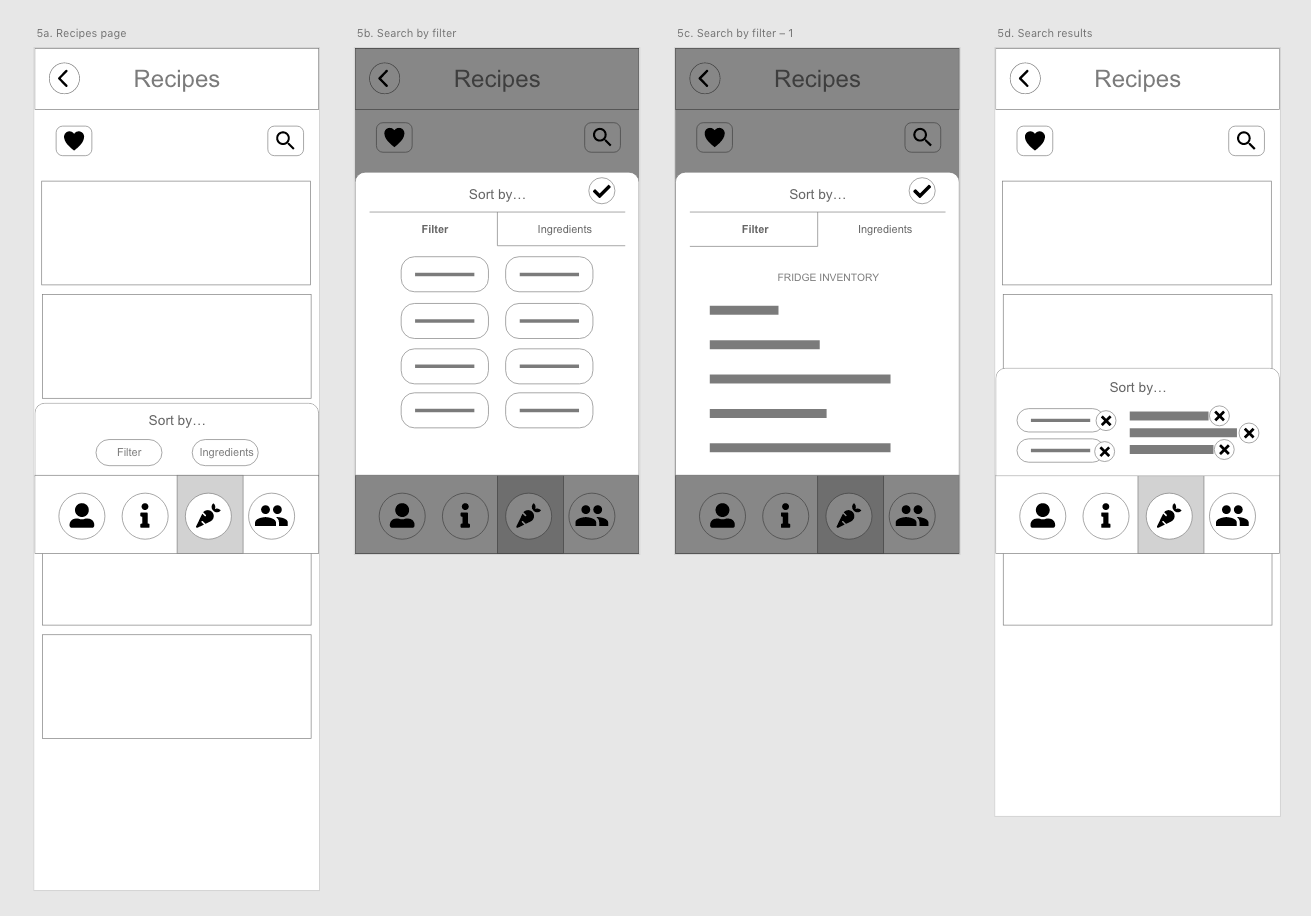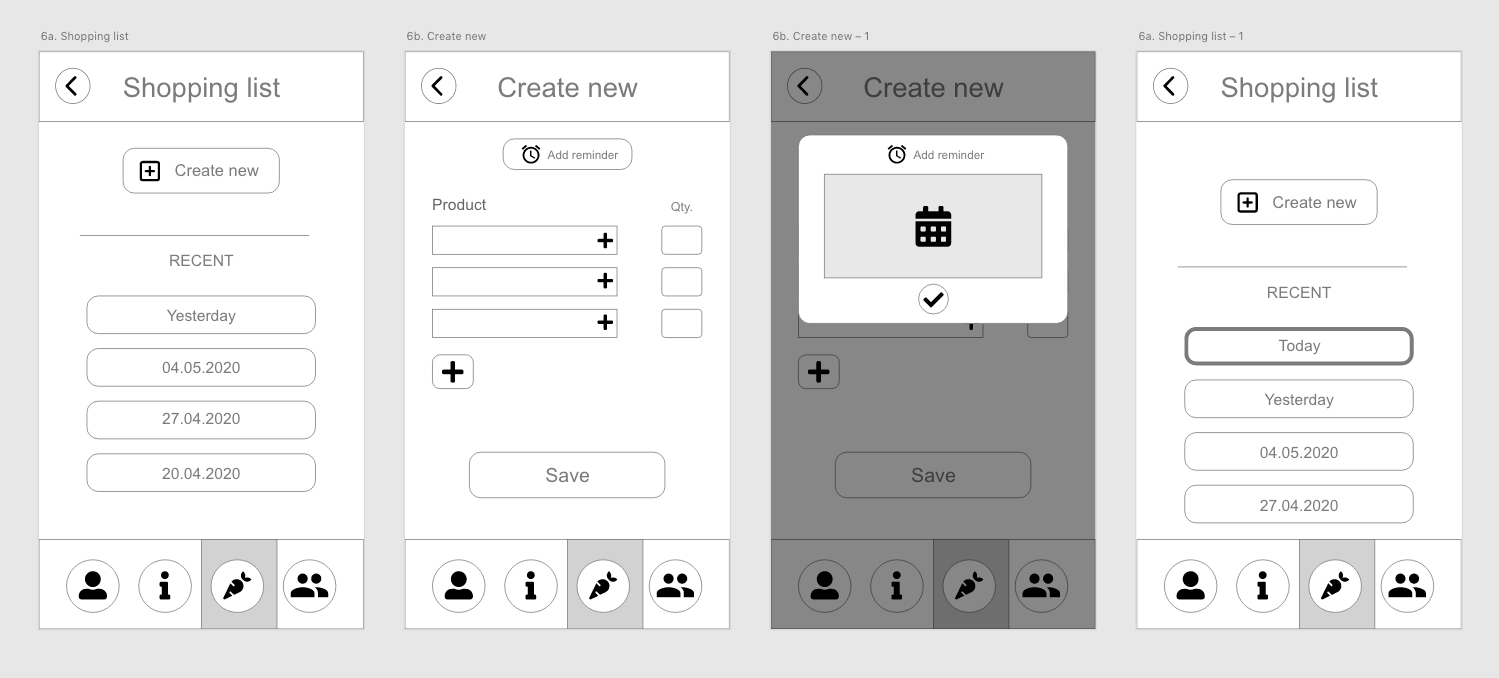Food4Thought
"An app that will help users reduce food waste on a micro level."
Food4Thought is a collaborative semester project created by me, Veronica S. Kristiansen, and Birgitte Venæs through Noroff University College. The project addresses the development of an user-centered app from the research-phase to initial prototype testing, by following the five stages Design Thinking progress; Empathise, Define, Iterate, Prototype, and Testing.
We started off by doing research to create empathy for the user and uncover their needs and pain points. Through this we conducted primary and secondary research.
Design Process
Following you will see a small summary consisting of infographs and other insights gained during this project. If you want to get deeper insight into our group's thoughts and decisions during this project, check out the progress document:
Assumption Brainstorming
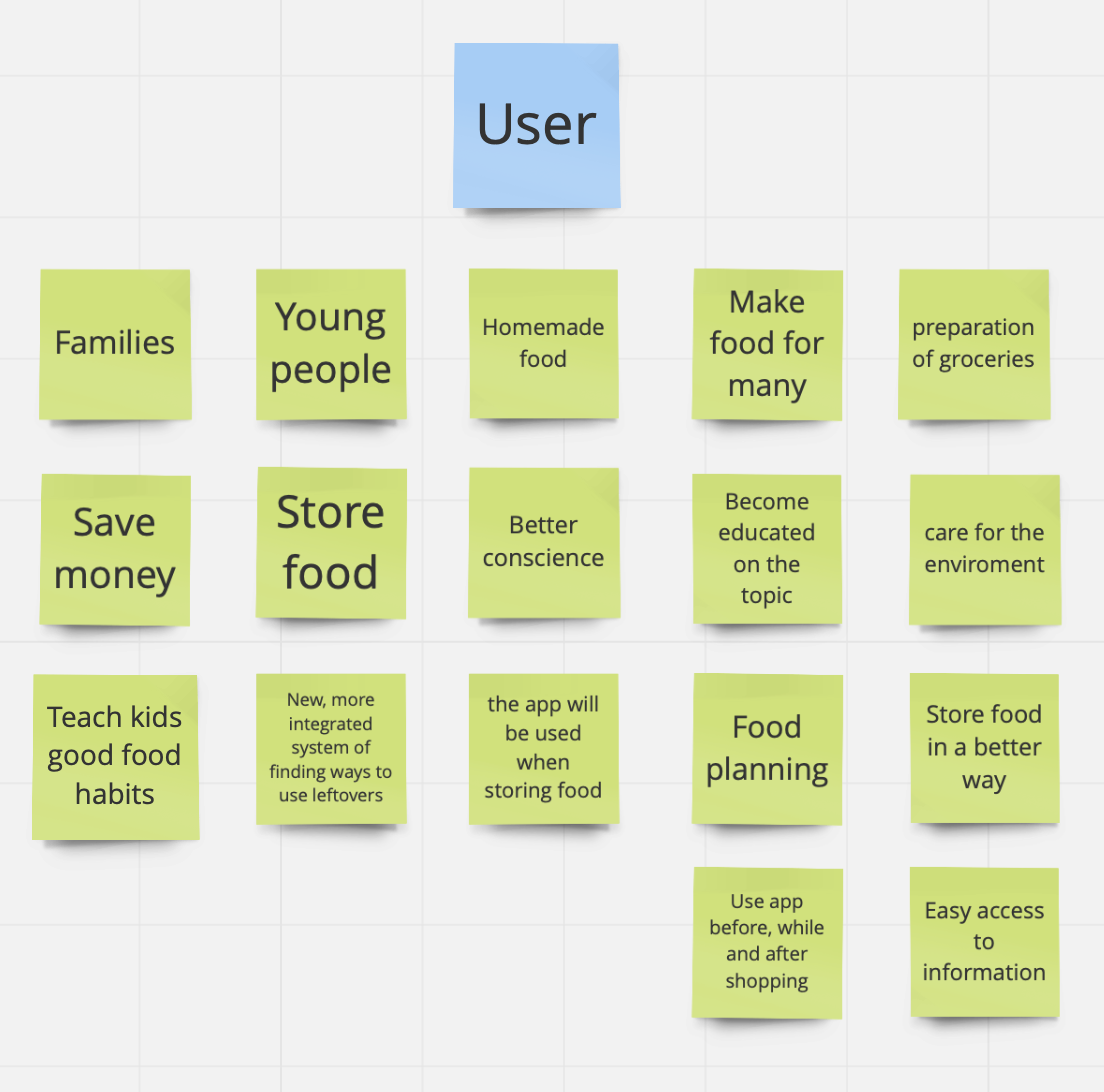
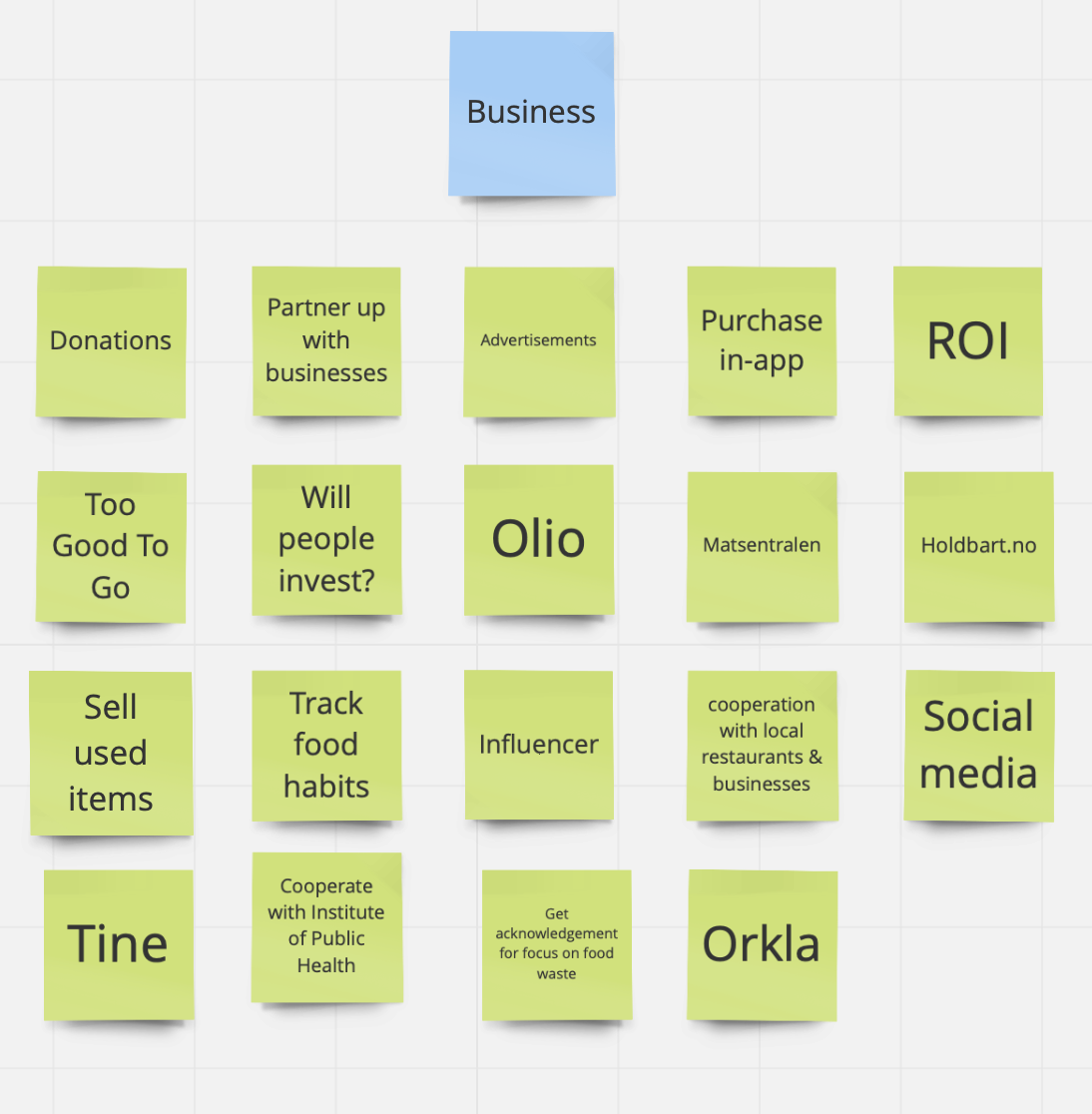
At the start of the project we brainstormed assumptions based on our perception of the target users and the app's goals and functions.
Assumption Risk Chart

After brainstorming, we put our assumptions into a risk chart. This helped us figure out which factors could 'endanger' our project if they were to fail. The ones put in the 'Unknown High Risk' section were the most important factors to be aware of when planning out our research plan.
Competitive Analysis

Infograph made by: Birgitte Venæs
In the competitive analysis we took a look at already existing apps within the food waste reduction industry. This gave us an understanding of what already exists out there, congeniality, and figure out how we could make a product that appeals to our users.
Questionnaire insights
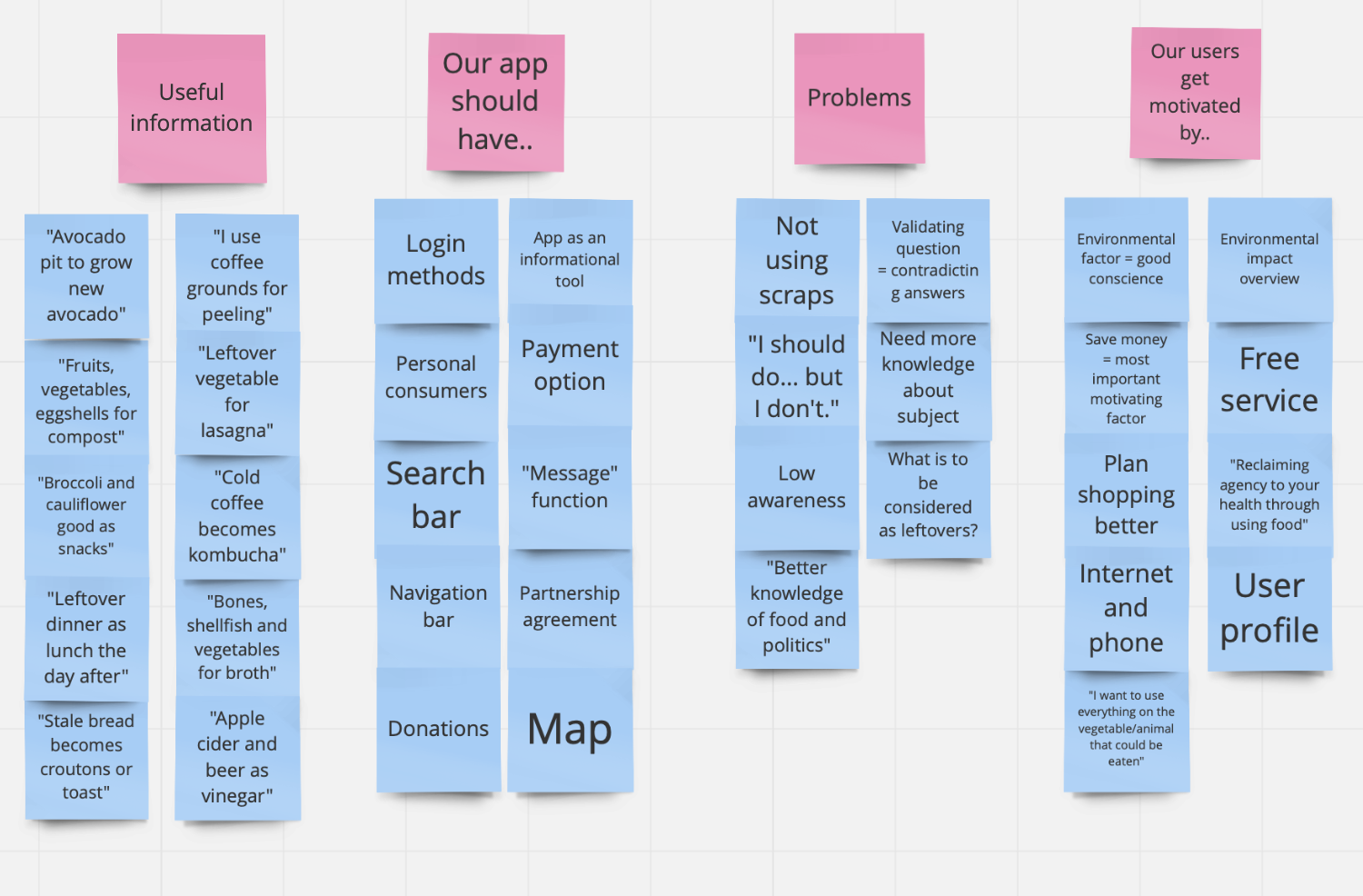
After we gathered information through a questionnaire, we compiled the insights into an affinity map.
Literature Review

Infograph made by: Veronica S. Kristiansen
During the literature review we read a bunch of different articles about food waste, habits and consumption. We also found information regarding the differences between apps and websites, to find out which format would suit our project the best.
Design Opportunities

Infograph made by: Birgitte Venæs
Based on our findings in the research phase, we compiled a list of design suggestion we could implement at a further stage in our project.
Primary and Secondary Persona(s)
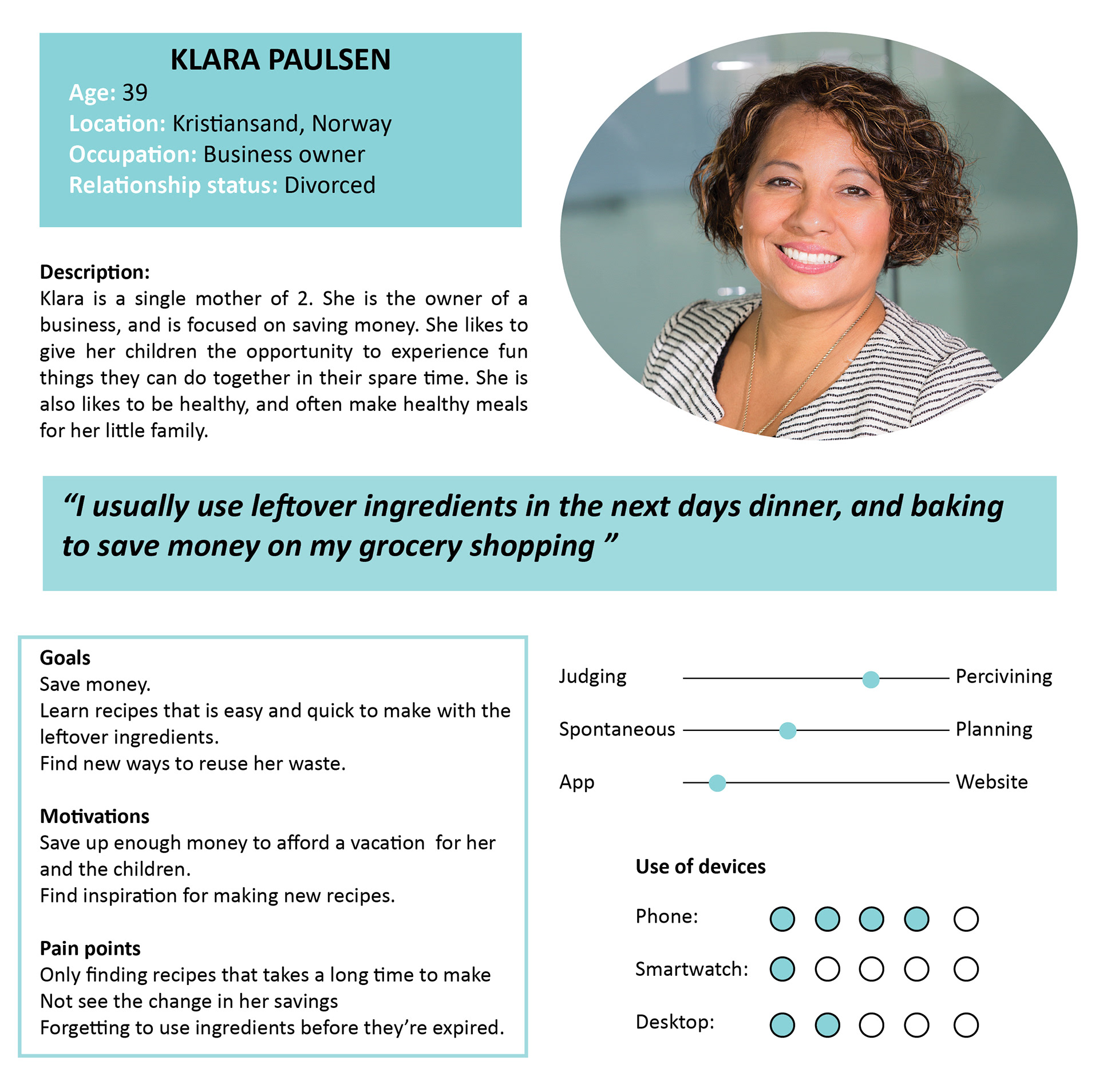

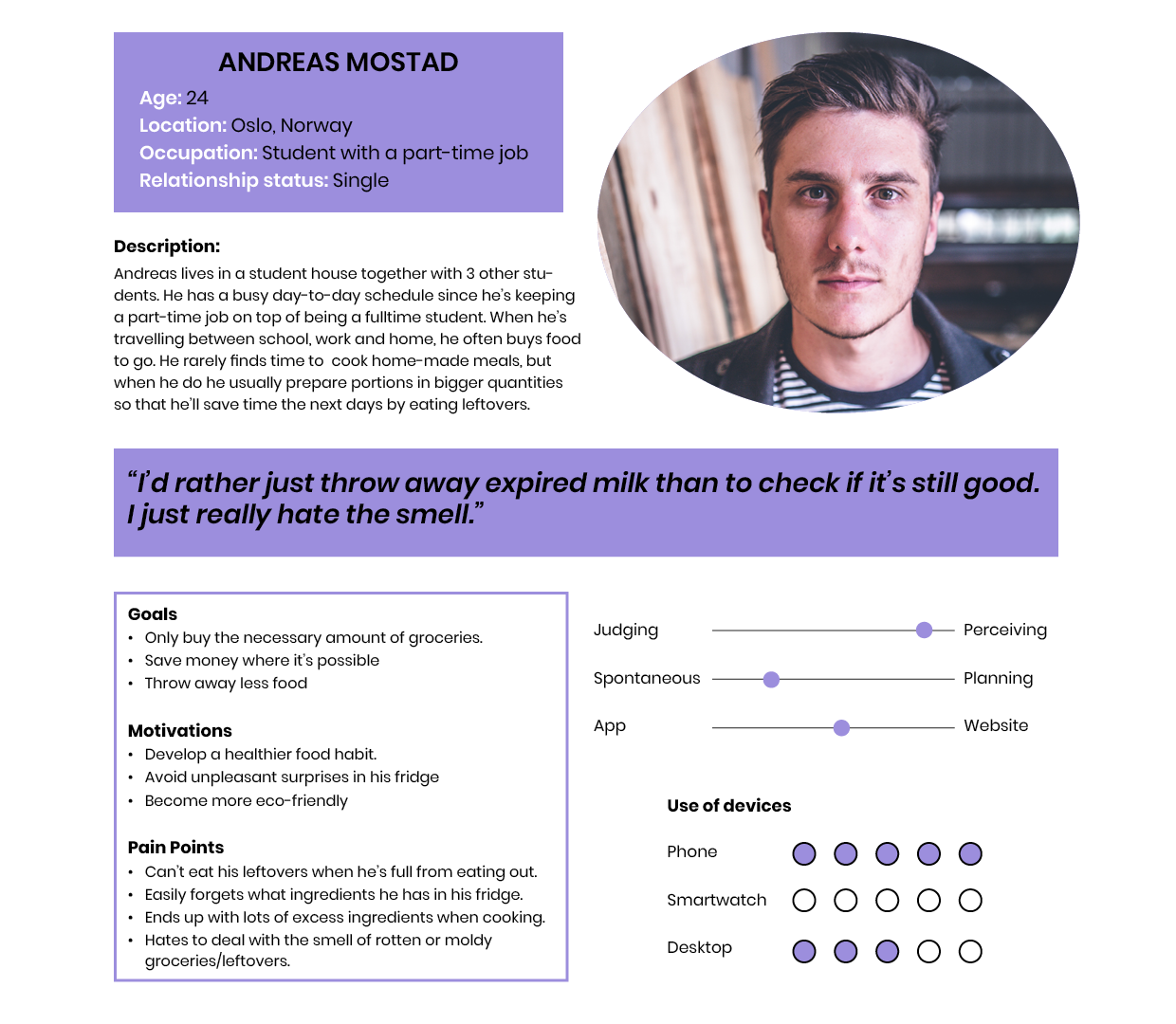
Infographs made by: Veronica S. Kristiansen, Birgitte Venæs, Julie Yksnøy Alnes


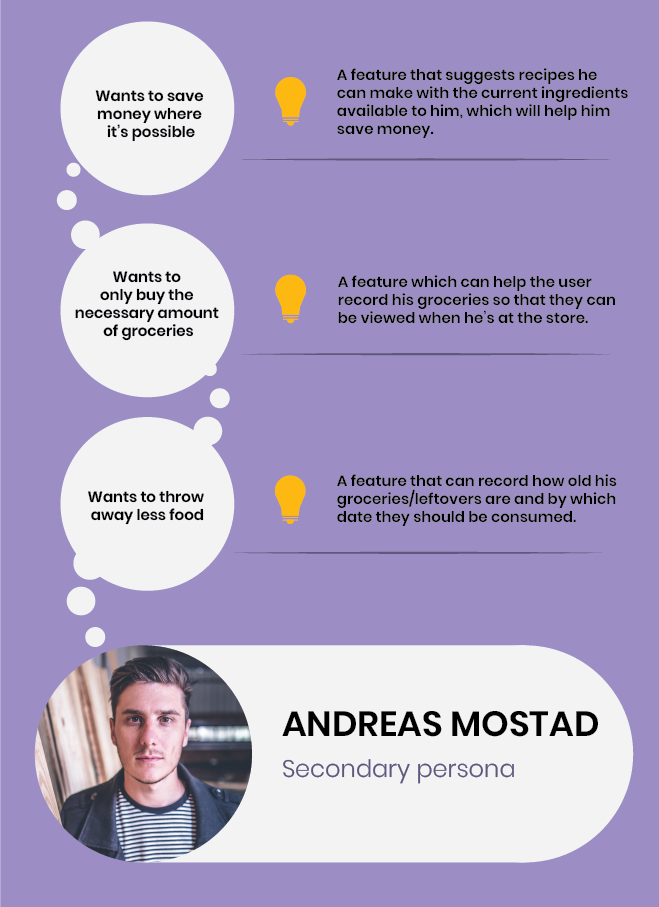
Infograph made by: Julie Yksnøy Alnes
These personas were created based on our insights gained during our research phase. The questionnaire gave us knowledge about our target audiences' food habits and behavior, which is reflected into these personas.
Problem Statement
”Families and young adults throw away large amounts of food. It most often happens that they forget the food they have in the fridge, and it sits there until the ‘best before’ date expires, or it turns bad. They go to the store even though they have food in the fridge. Also, impulse purchasing is also a common problem, and consumers are poor at planning their shopping rounds.”
Site Map

Summary of ideation
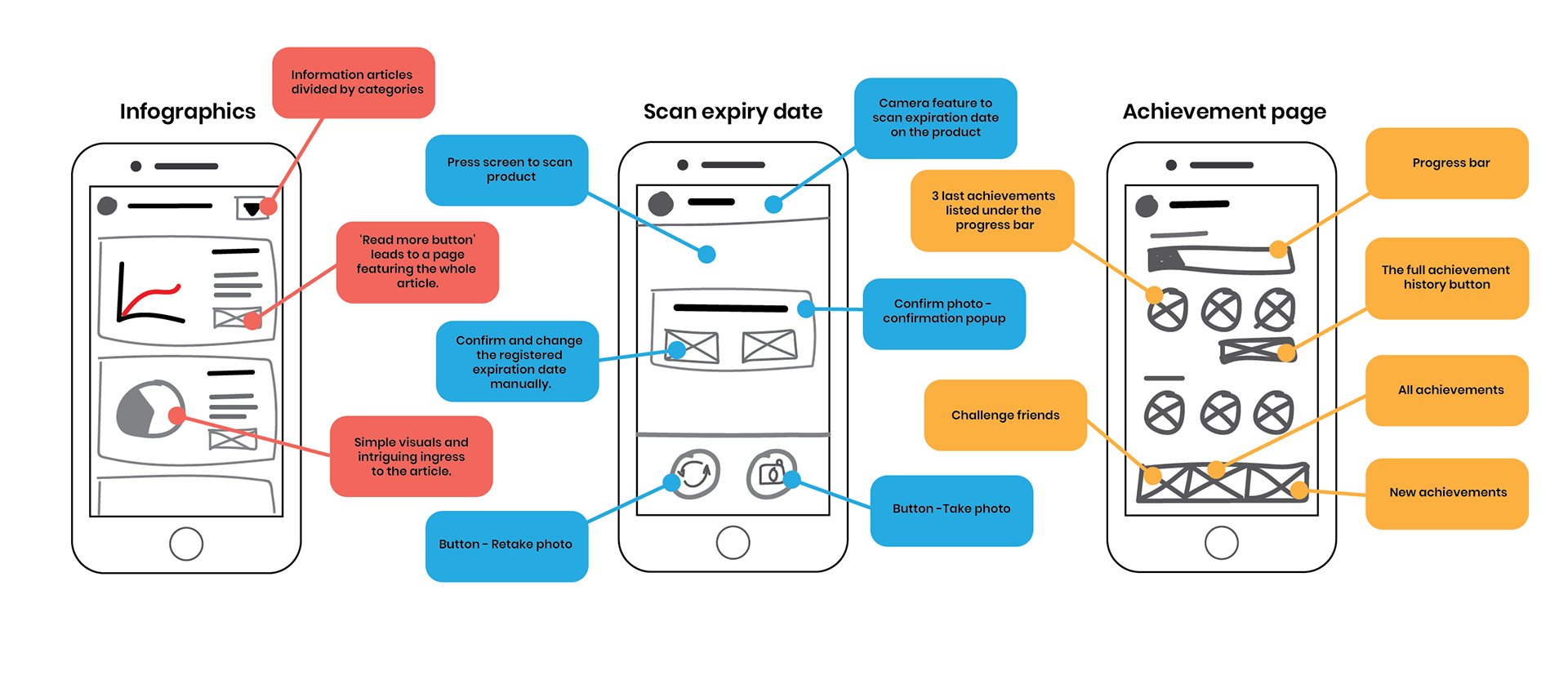
Infograph made by: Julie Yksnøy Alnes
Low-fidelity Wireframes

